https://www.pewpewtactical.com/wp-content/uploads/2022/09/Marines-training-with-the-M27-Photo-Cpl.-Michaela-Gregory-2.webp
In the last few years, the Marine Corps has been modernizing its infantry forces en masse.
The average Marine Infantryman has seen a significant upgrade in their guns and gear in the last decade.
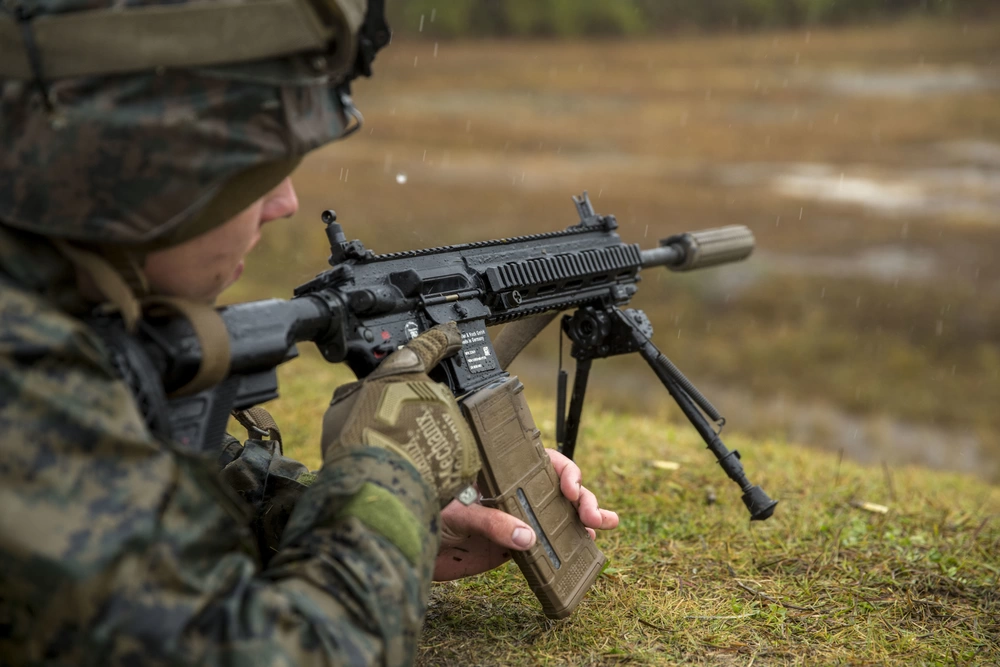
In the wake of F-35s, remote control missile launching trucks, and drones, the infantry rifle doesn’t seem all that special.
Or is it?
Today, we’re going to walk through the current infantry rifle and the gear that adorns it. If you’ve been curious about what Marines are carrying (or what to grab similar gear for your own rifle), keep reading!
Table of Contents
Loading…
How Did We Get Here?
The Marine Corps created the A2, for better or worse, and stuck to the A4 model of the gun.
Everyone moved to the M4, but the Marine Corps clung to the M16A4 for longer than necessary.
The M4 saw adoption by the infantry in 2015, and only two years later, the M27 would go on to be the rifle fielded by infantry forces.
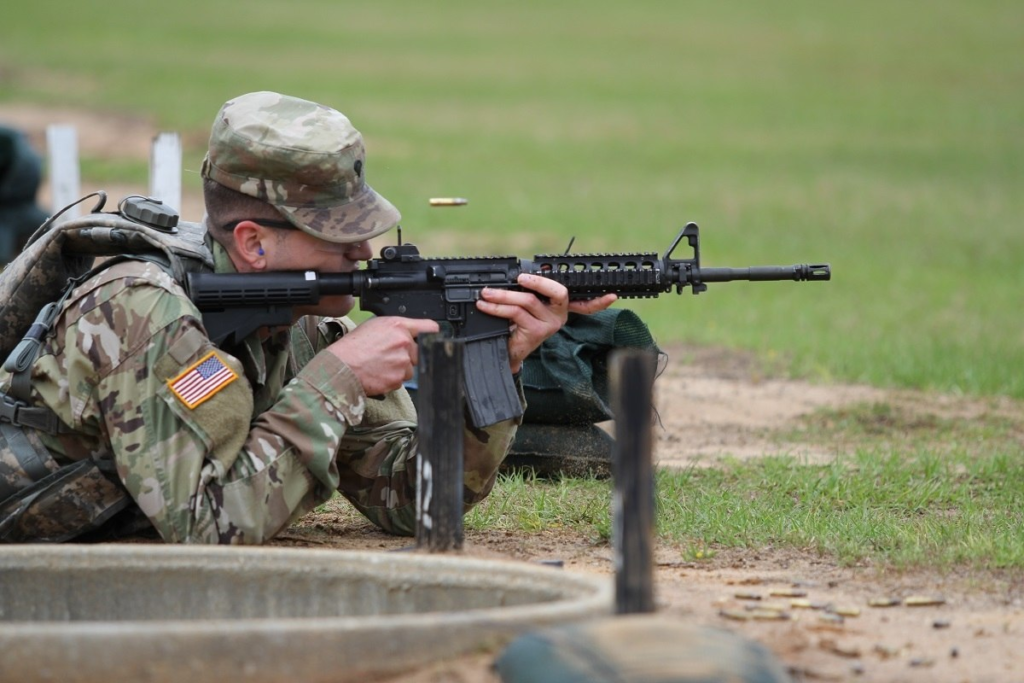
Marines picked up the M27 in 2009 and began issuing the gun in 2010, starting with the 2nd Battalion 7th Marine regiment.
The M27 would replace the M249 SAW and would become an automatic rifle tasked with laying down suppressive fire. Marines in Afghanistan fell in love with the weapon, and the Marine Corps was impressed.
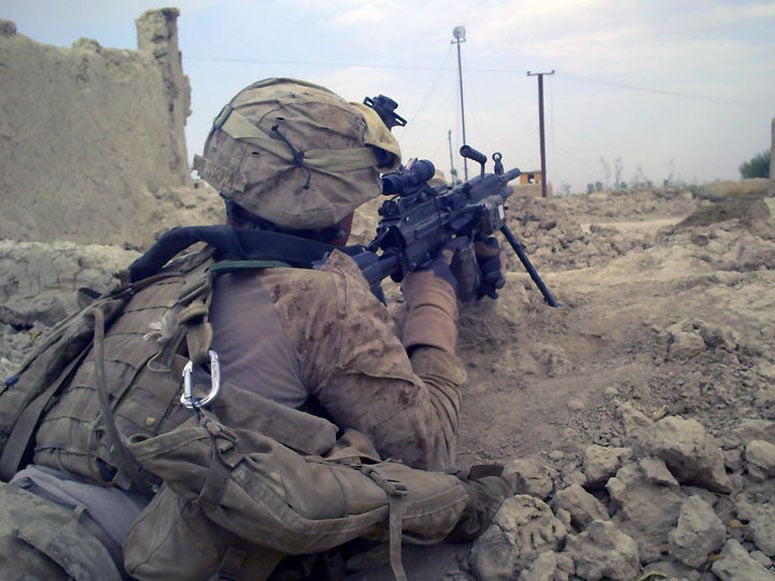
Impressed enough, they replaced the M4 for infantry forces without needing a very long and drawn-out testing procedure.
By now, the average active-duty infantryman is armed with an M27. It seems as though Marines in weapons platoons and companies are still carrying the M4.
The Infantry Rifle
Look at the M27 and the M4. They look pretty dang similar, right? We can call it Stoner’s grandchild.
Well, not just Stoner’s. It has some Hans in it too.
HK designed the HK 416, a piston-driven rifle that’s very clearly related to the M4 series of rifles. To put it simply, the HK 416 is an M4 with the short-stroke gas piston of the G36.
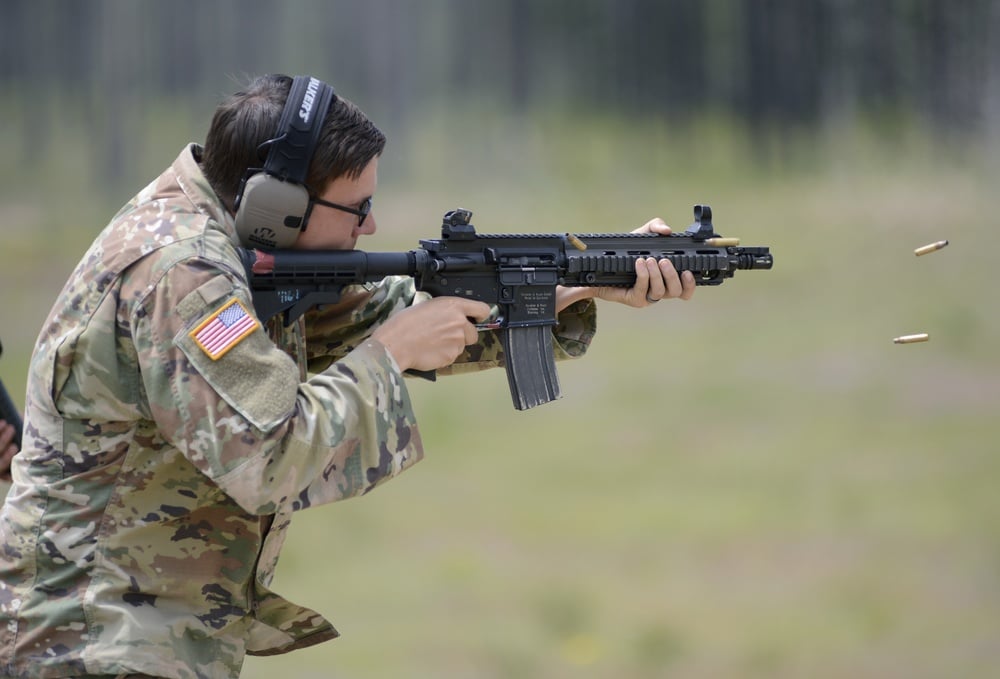
HK took the 416, made a few changes to accommodate the Marine Corps, and called it good. The differences are minimal, and it’s the same rifle at its core.
That base Marine Corps rifle utilizes a 16.5-inch barrel, features a collapsible stock, and utilizes the same STANAG magazines.
Clearly, we aren’t ready for M-LOK in the military because the Marines clung to the quad rail they know and love.
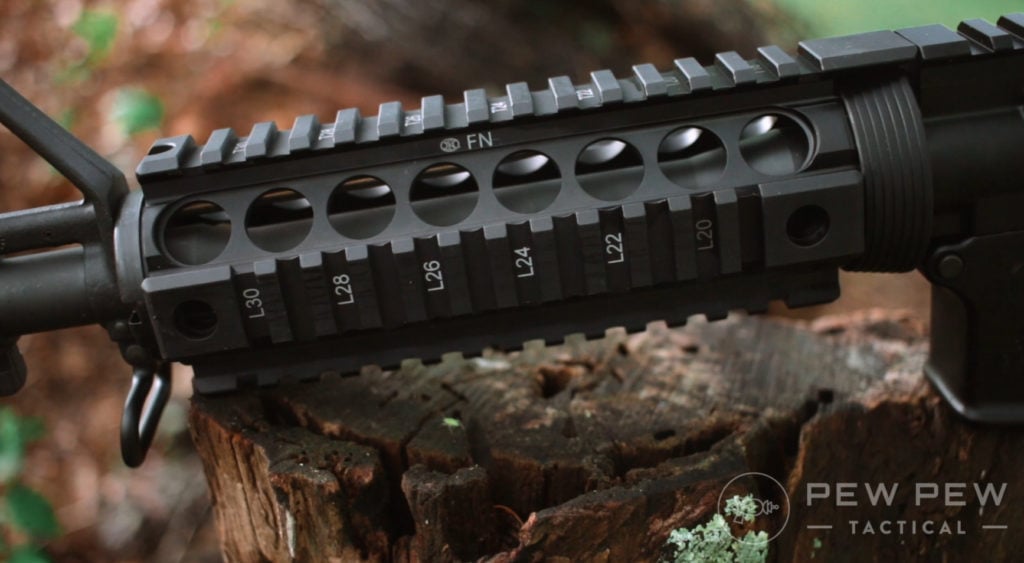
This was the first time Marines got an ambidextrous safety, but they didn’t bring the HK 416 A5 total ambidextrous controls. The rifle might be considered a carbine, but it can be rather hefty at 7.9 pounds.
While the M27 might be the primary rifle, we also need to mention the M38.
The M38 is the DMR variant of the weapon, and the only real difference is the optic equipped to the weapon.
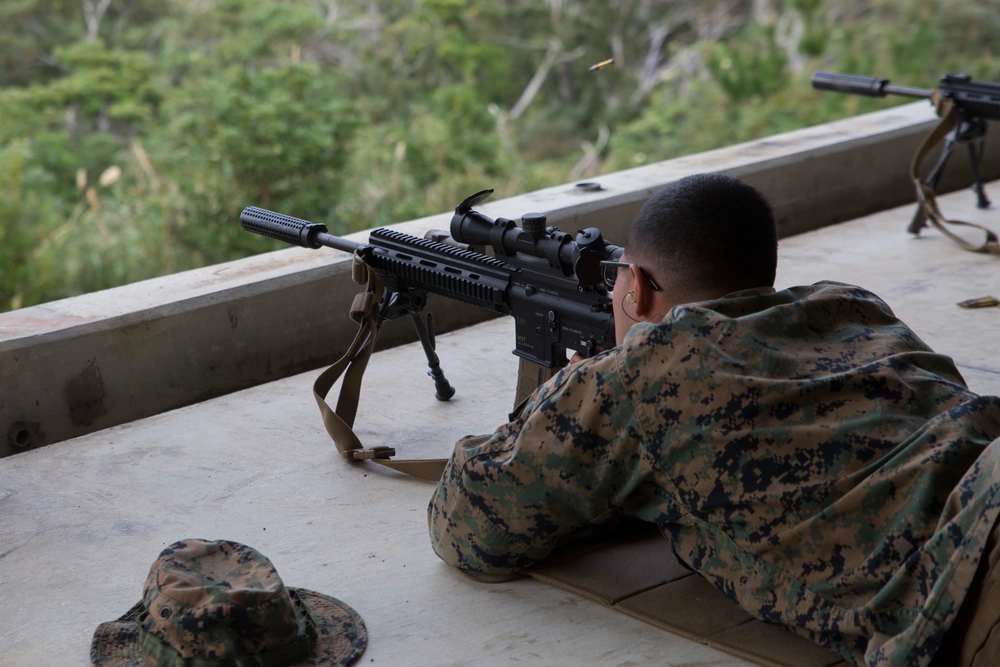
Marine Corps Optics
Speaking of optics, the Marine Corps is in a transition period. They are currently fielding three optics with the various rifles in their infantry squads.
Trijicon 3.5×35 BAC with RMR
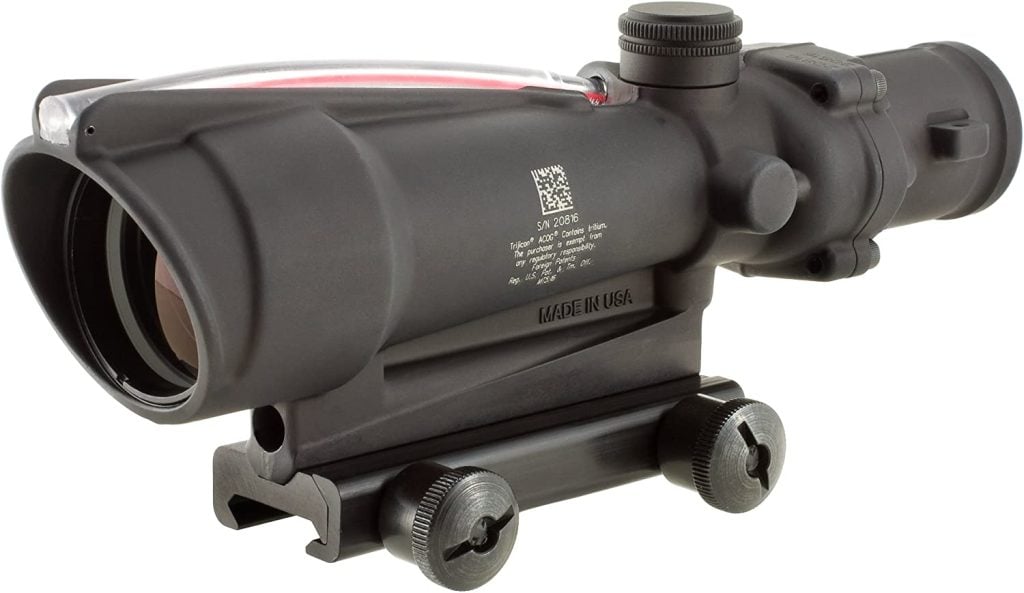
When the M27 hit the fleet, the first optic adopted was the Trijicon 3.35×35 with an RMR riding backup.
Marines have long used the ACOG series of optics on M4s and M16A4s, and it’s been a successful team-up. The new model, the SU-258/PVQ Squad Day Optic, dialed magnification back a hair.
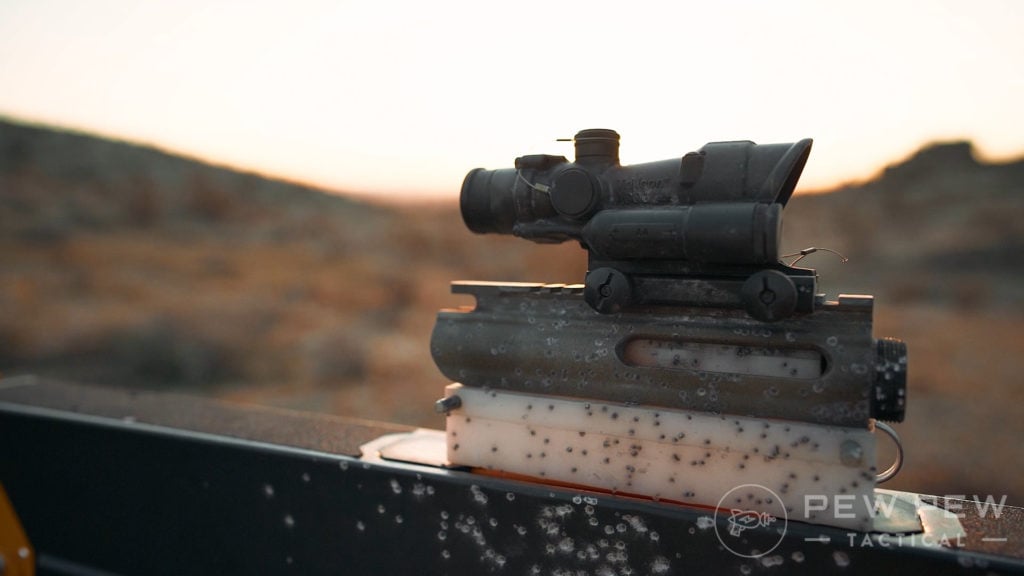
We also saw the move from the chevron optic to the donut. Marines were often trained to use an occluded shooting method with the old ACOG.
Prices accurate at time of writing
Prices accurate at time of writing
-
25% off all OAKLEY products – OAKLEY25
Copied!
Visit Merchant
It works but isn’t perfect. The Marine Corps added a Trijicon RMR to the top of the optic to fix this.
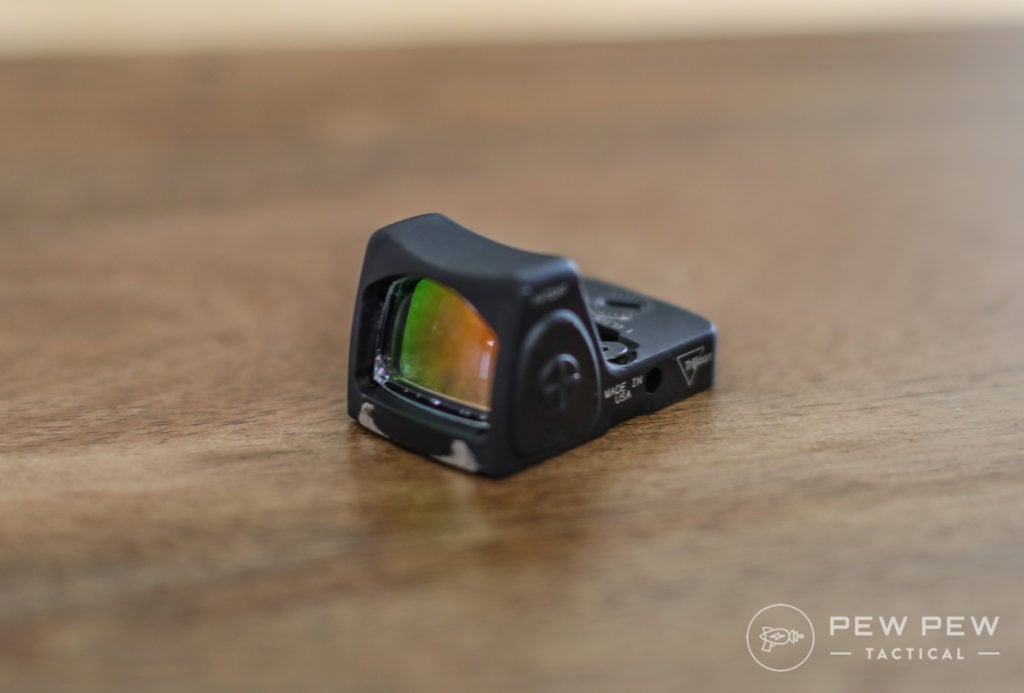
Using a red dot is more straightforward than using the occluded shooting technique and seemingly faster and potentially more precise.
This setup presents Marines with a durable and straightforward design for engagements at the average infantry range.
Prices accurate at time of writing
Prices accurate at time of writing
-
25% off all OAKLEY products – OAKLEY25
Copied!
Visit Merchant
Trijicon 1-8X VCOG
The Marine Corps plans to replace the ACOG with the Trijicon VCOG. The VCGO presents the first mass-adopted LPVO for the United States military and will give Marines a very versatile and capable 1-8X level of magnification.
LPVOs are taking over the world of optics, and it’s interesting to see the Marines being early adopters.
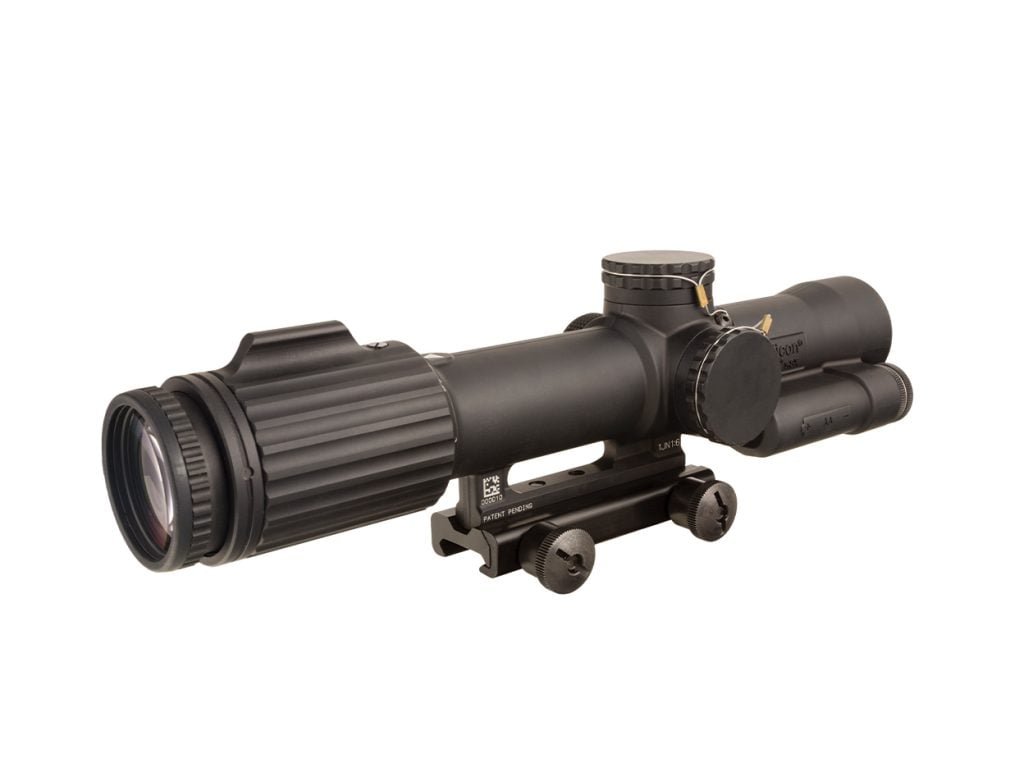
The VCOG allows Marines to have an optic that works equally well at close and long ranges. From the ground up, the optic is designed to address the needs of the military.
Trijicon designed the optic with a first focal plane configuration, so the reticle grows and shrinks as the magnification increases and decreases. The reticle’s design ensures it can be used effectively at nearly any range.
Inside sits a segmented circle that’s massive. Since it shrinks when the magnification is low, it works much like a red dot at lower magnifications.
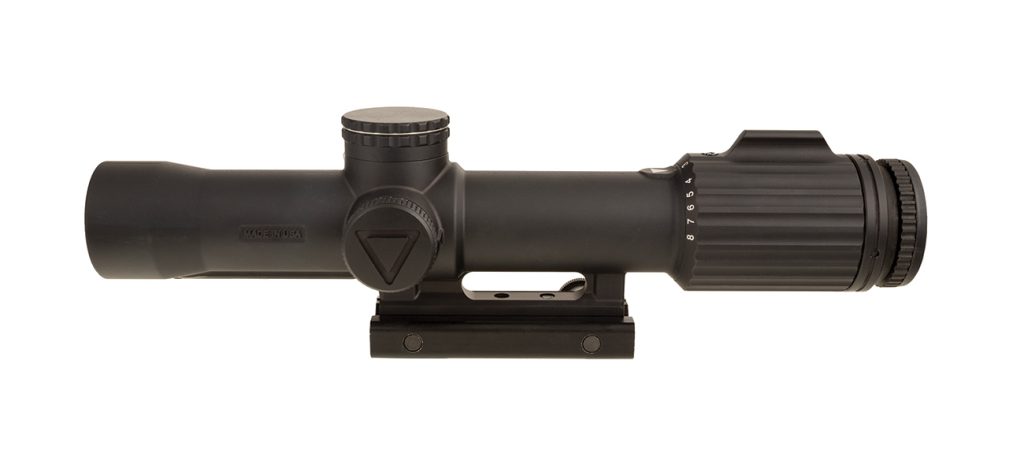
As the magnification increases, the BDC, wind calls, and illuminated crosshair becomes large and more in play for longer-range shots.
It’s a well-designed reticle that’s simple but versatile. Trijicon equipped the VCOG with 11 brightness settings, including two night vision settings.
Marines are amphibious by nature, and the VCOG can be submerged to 66 feet, so ship to shore won’t be an issue.
Prices accurate at time of writing
Prices accurate at time of writing
-
25% off all OAKLEY products – OAKLEY25
Copied!
Visit Merchant
Leupold TS-30A2 MARK 4 MR/T 2.5-8X
Designated marksmen will have their M38s equipped with the Leupold TS-30A2 MARK 4 MR/T optic.
Marines wielded this optic on the Mk 12 DMRs used by Marine Corps designated marksmen, so the Marines had them in inventory and had institutional knowledge of the platform.
Plus, Marines didn’t break it in the GWOT, so it’s tough. This optic uses a 2.5-8X magnification range with a 36mm objective lens.

The turrets are fingertip adjustable, the reticle allows for range estimation, and the optic is rugged, well made, and water, shock, and fog proof.
Interestingly, with the adoption of the VCOG 1-8X being the new optic of choice, the older MARK 4 might give DMs an outdated optic. The MARK 4 is an SFP design and doesn’t have the same versatility as the 1-8X.
Marine Corps Gear
Harris 9-13 S-LM Bipod
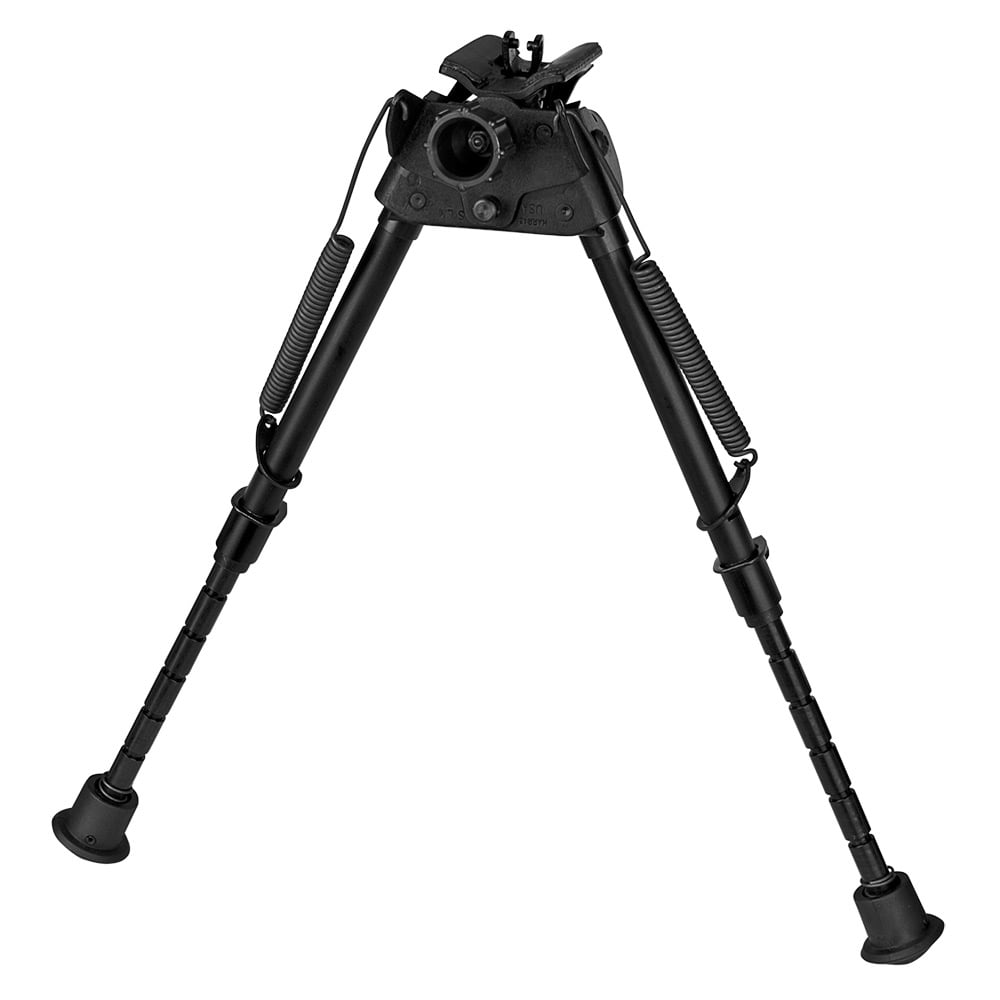
Marines love the Harris bipods. They’ve been in use in various precision rifles and DMRs for decades now. Automatic fire requires stability to control, and bipods lend stability.
As soon as the M27 replaced the SAW, the Marine Corps adopted a bipod to provide supportive fire.
From photos, the bipod doesn’t seem to be equipped for every M27 in the Marine Corps and seems to be reserved for Marines in the DMR and automatic rifleman role.
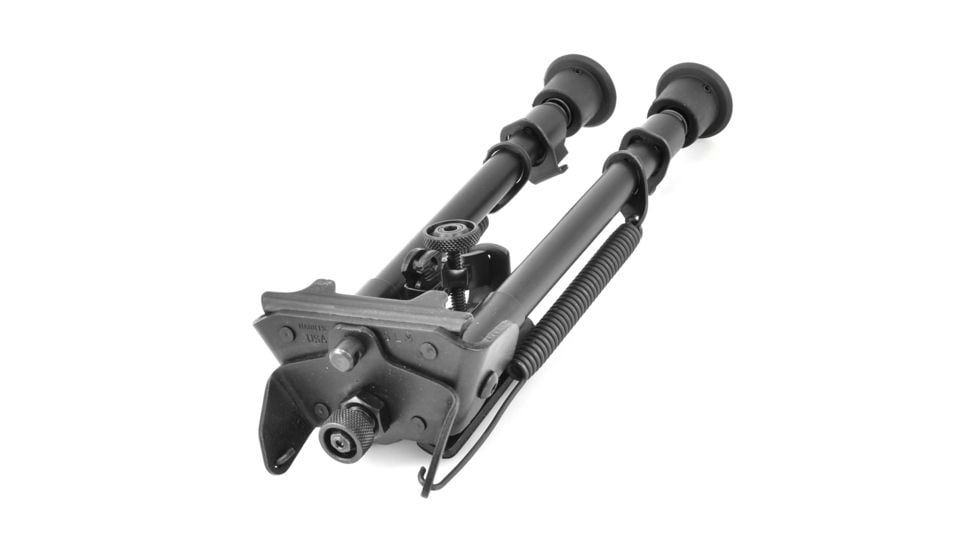
The 9-13 numbers reference the 9-13 inches of adjustable height. The S-LM bipod uses notched legs that can be adjusted independently of each other.
With the S-LM series, the bipod legs deploy automatically with spring-loaded action. These legs make the bipods easier to adjust when prone and when dealing with uneven terrain.
Harris bipods are surprisingly affordable for their quality. They can take a serious beating and cost less than $100.
Prices accurate at time of writing
Prices accurate at time of writing
-
25% off all OAKLEY products – OAKLEY25
Copied!
Visit Merchant
Magpul Gen3 PMAG
With the adoption of the Magpul Gen3 PMAG, the circle is complete.
What do I mean? Well, Magpuls founder served as a Marine, and with the adoption of their flagship product, the circle of Jarhead completed itself.
What can I say about PMAGs?
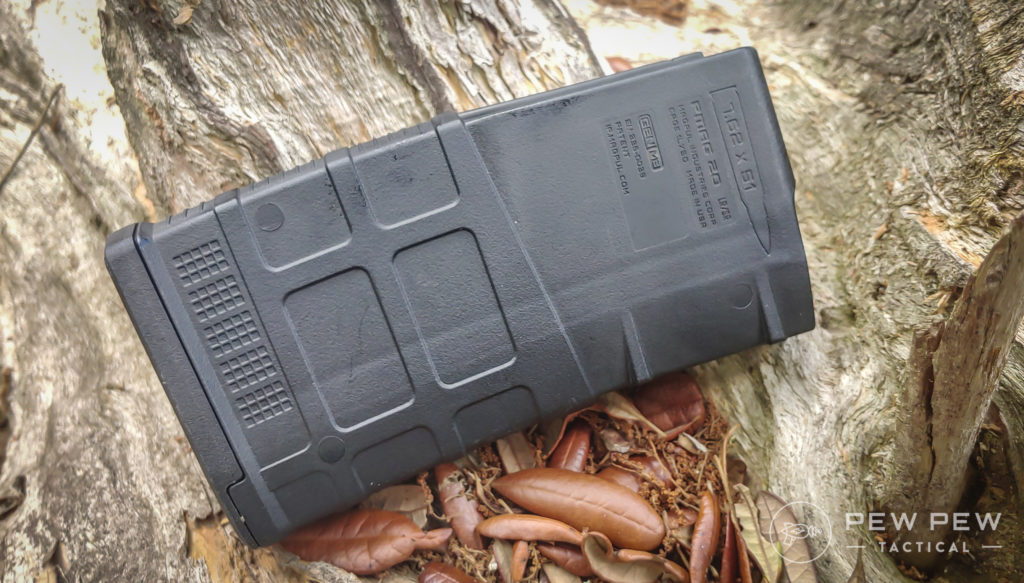
They are the premier polymer magazine. Every generation sees massive improvements that most shooters never notice.
When the M27 first rolled out, the Gen3 hadn’t seen the light of day, and the Gen2 magazines had issues with the M27.
This led the Marine Corps to ban the use of PMAGs, and my unit banned them while we were deployed, even though we had zero M27s at this time. Common sense isn’t always common.
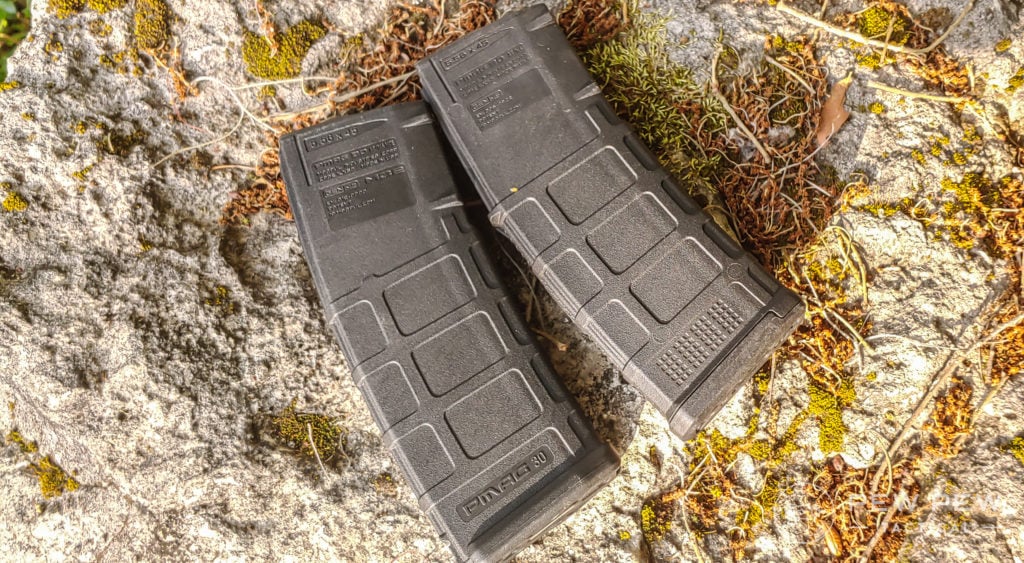
Anyway, Magpul went back to the drawing board and made changes that allowed the Gen3 PMAGs to work flawlessly in the M27. The Gen3 Pmags use a stronger polymer, a more aggressive grip texture, and improved upon the famed design.
This made the most dependable PMAG ever created, and they are now the standard-issue magazine of the United States Marine Corps.
Prices accurate at time of writing
Prices accurate at time of writing
-
25% off all OAKLEY products – OAKLEY25
Copied!
Visit Merchant
Blue Force Gear VCAS Sling
Before the advent of the Blue Force Gear VCAS sling, it was a dark time. As a Marine, you had only a few choices. You could use a 3-Point, but 3-points are a mess of straps and buckles that is a real pain in the ass.
You could use a 1-point which meant the rifle would be bouncing around and occasionally swinging into your crotch area and often made letting the weapon hang quite uncomfortable.
Then the VCAS or Vickers Combat Application Sling rescued us.
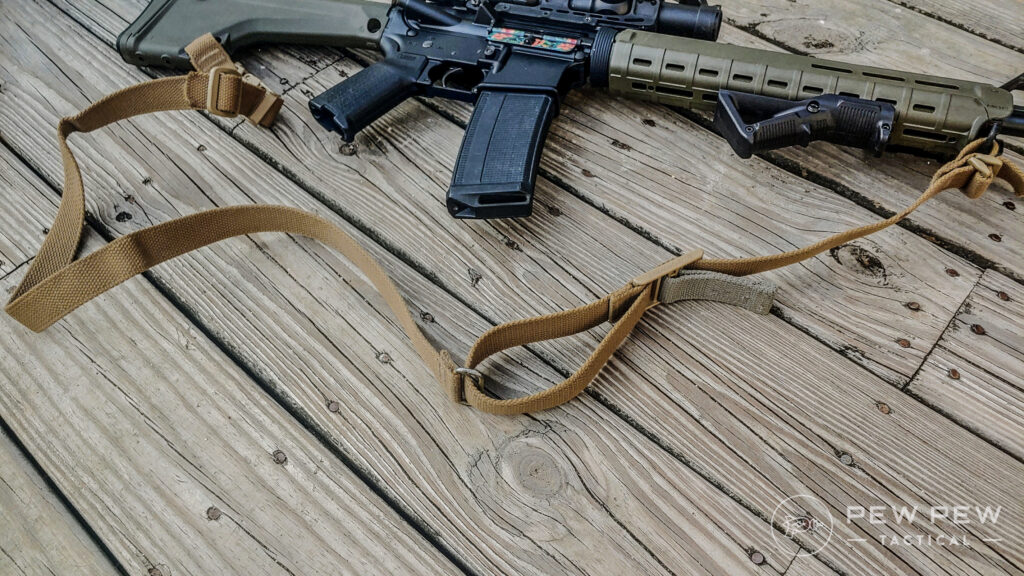
My unit got them fairly early, and it changed my life and how I carried my rifle. The tactical 2-point became the dominant option, and the VCAS remains the issued sling of the Marine Corps and the M27.
The VCAS is made from durable 1.25-inch webbing and features a ton of adjustment. You can adjust the sling for armored or nonarmored use. A quick-adjust pull tab makes it easy to adjust the sling rapidly.
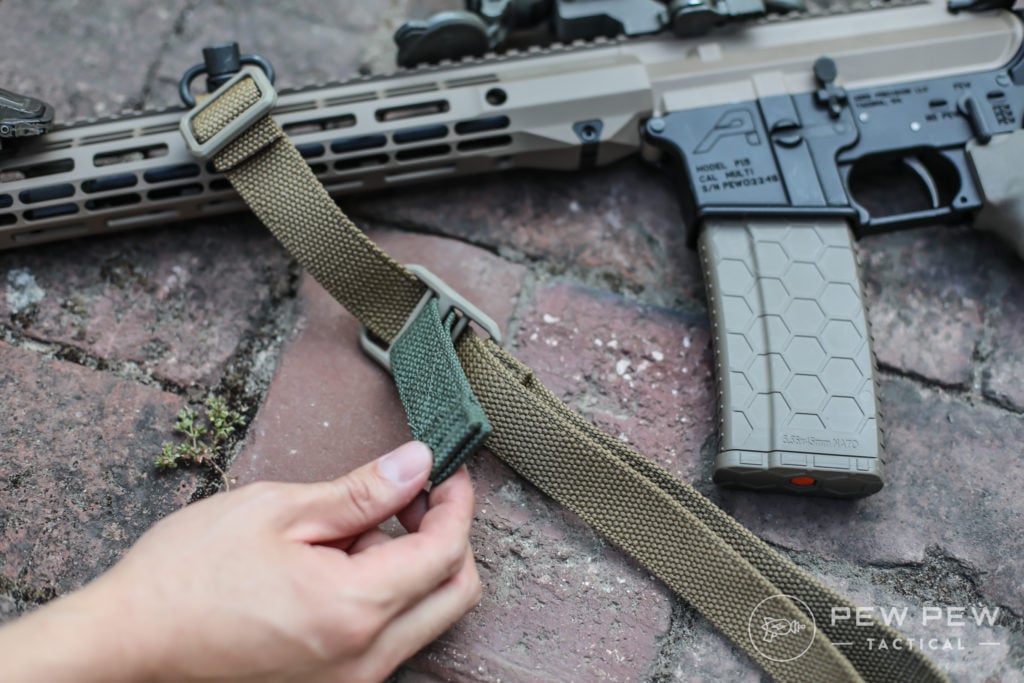
When properly set up, a user can adjust the sling to have the rifle hanging loose and easy to maneuver, but it can be tight enough to go hands-off in the pull of a tab.
When tightened, it’s easy to climb, carry a wounded comrade, and more. In terms of durability, well, I still have mine, going on over a decade now, and it still functions perfectly.
Prices accurate at time of writing
Prices accurate at time of writing
-
25% off all OAKLEY products – OAKLEY25
Copied!
Visit Merchant
Knights Armament NT4 Suppressor
Every Marine infantryman will also have his rifle equipped with a suppressor.
Yep, it’s one of the first wide-scale issuing of cans amongst a conventional military force. The USMC has been experimenting with suppressors in the infantry for years and only recently pulled the trigger.
The suppressor of choice is the Knight’s Armament NT4.
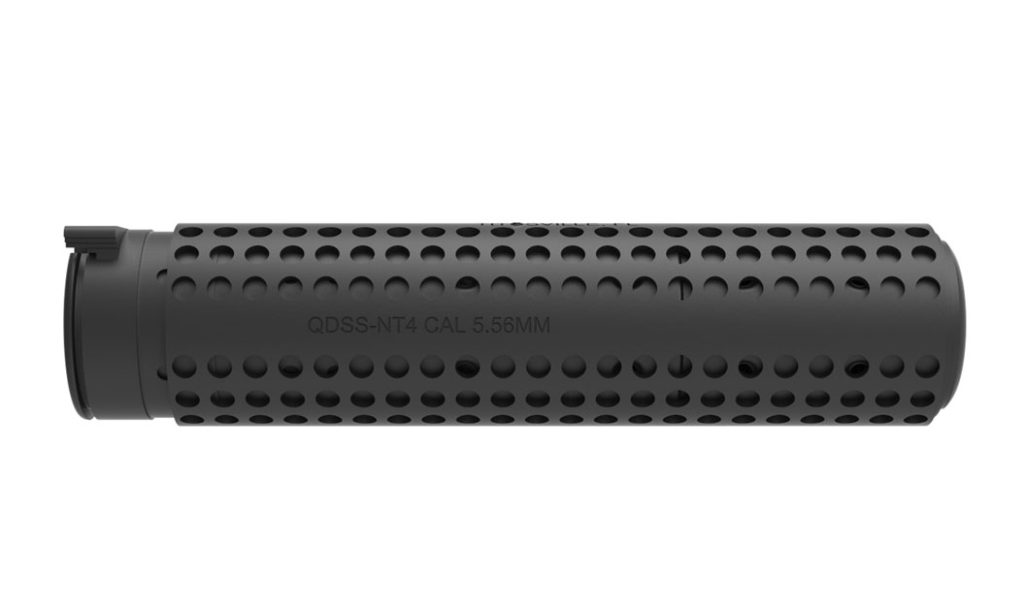
The NT4 is an absolute workhorse and has been kicking around since the late 90s. It’s not the most modern suppressor but seems to offer exactly what the Marine Corps wants as a price point they can stomach.
It’s known to be quite rugged, and you want rugged when it comes to Marines.
Prices accurate at time of writing
Prices accurate at time of writing
-
25% off all OAKLEY products – OAKLEY25
Copied!
Visit Merchant
PEQ 16 Laser Aiming Unit
The Marine Corps officially adopted the PEQ-16 to replace the older PEQ-15. The PEQ 16 offered Marines a laser aiming unit with a built-in weapon light. The weapon light is pitiful, with a mere 125 lumens of white light.
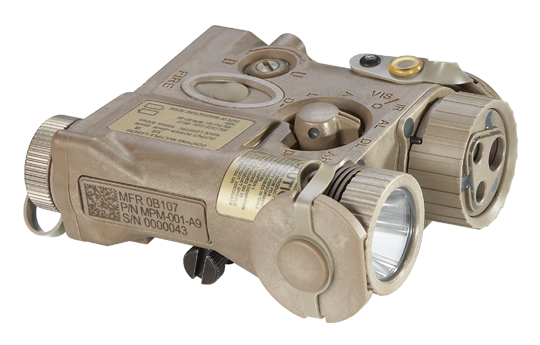
Although it’s rare to use white lights when NVGs and IR lasers typically dominate night fighting, in the face of lights from Cloud Defensive, Modlite, and even Surefire, designed in 2008, the 125 lumens of light is a penlight.
The device also has visible IR lasers, an IR flood setting, and more. It allows Marines to effectively and efficiently aim at night, mark targets, and more.
Final Thoughts
For as long as I can remember, the Marine Corps was the hand-me-down branch, but they seem to be leading the way in gear and rifles these days.
The Marine Corps modernization is equipping Marines with some pretty high-speed gear. The rifles will soon be outfitted with cans and LPVOs making them quite modern, albeit quite heavy.
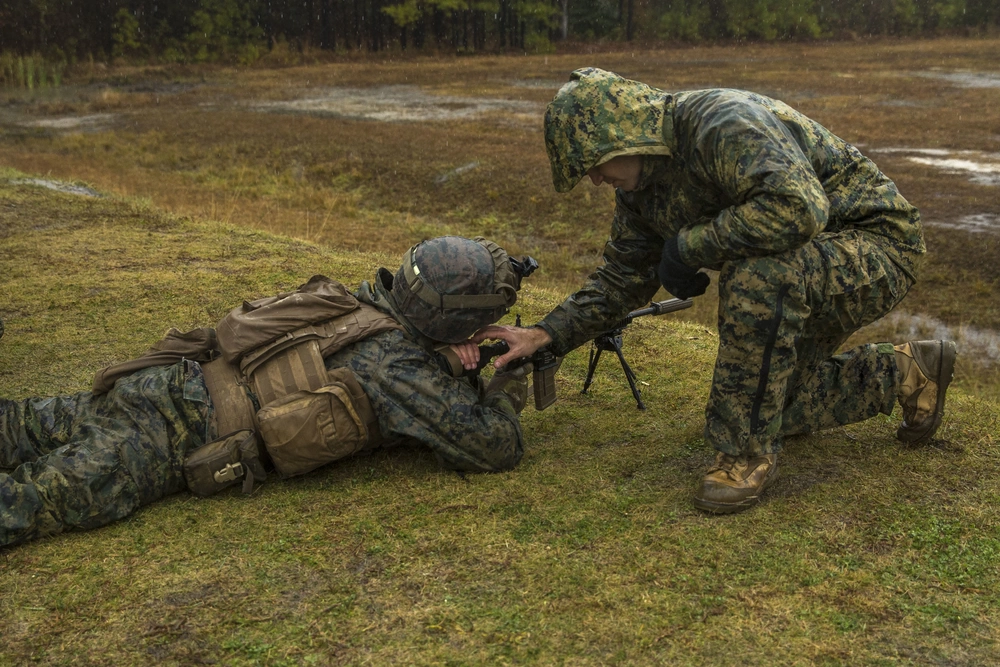
Is that a sweet modern setup? Or is a dang near 13-pound rifle just too much? Let me know in the comments below. For guns you can buy, check out our guide to Military Surplus Rifles & Shotguns.
The post Goodbye M16: A Look at the Modern Marine Infantry Rifle M27 appeared first on Pew Pew Tactical.
Pew Pew Tactical